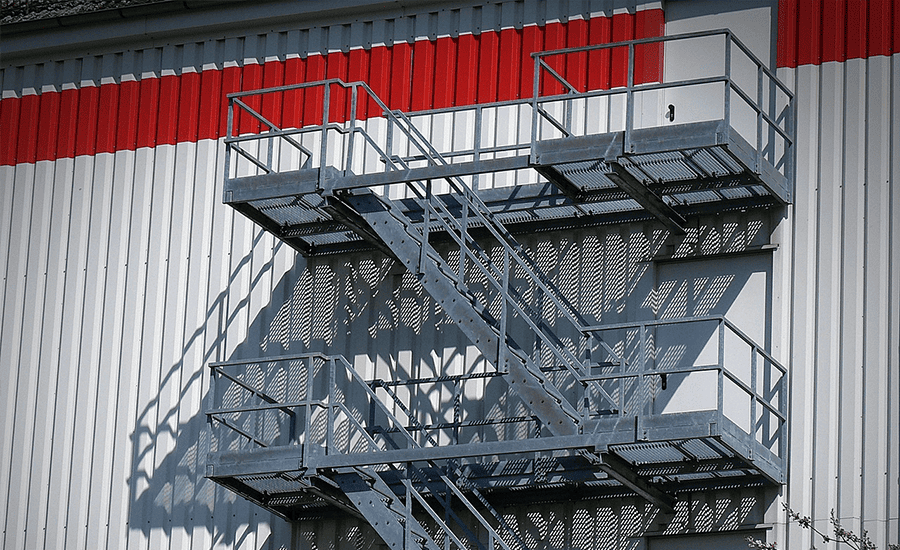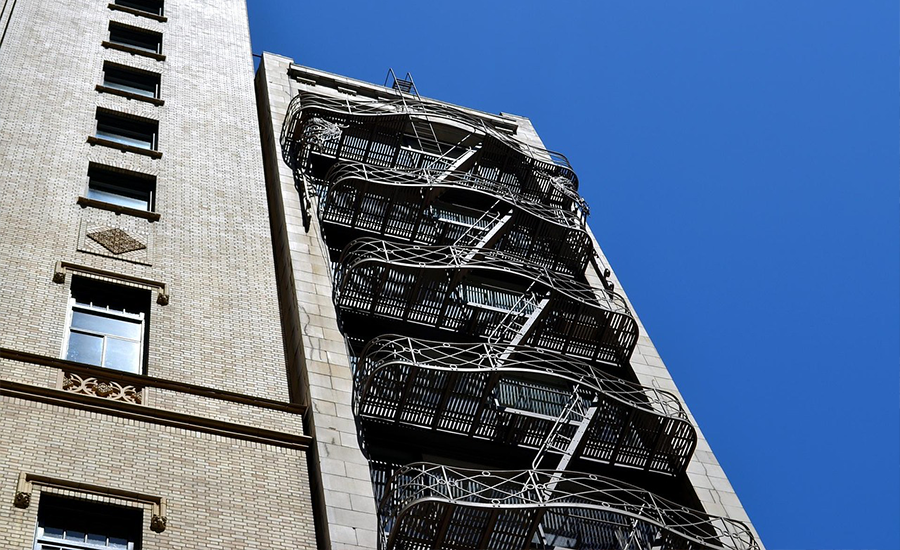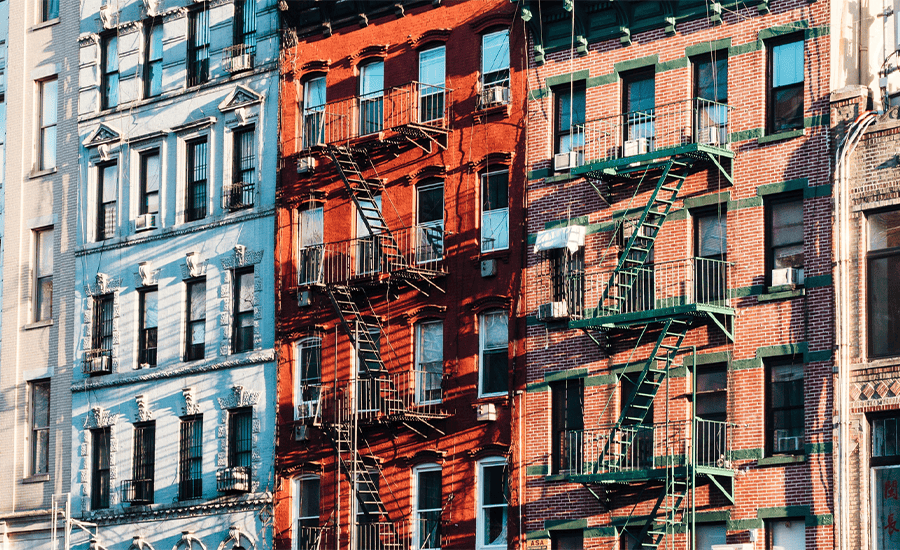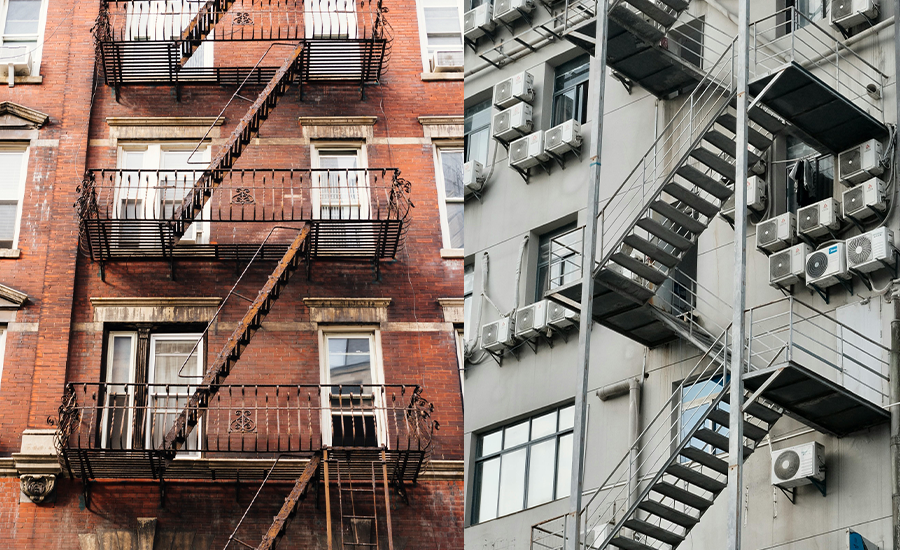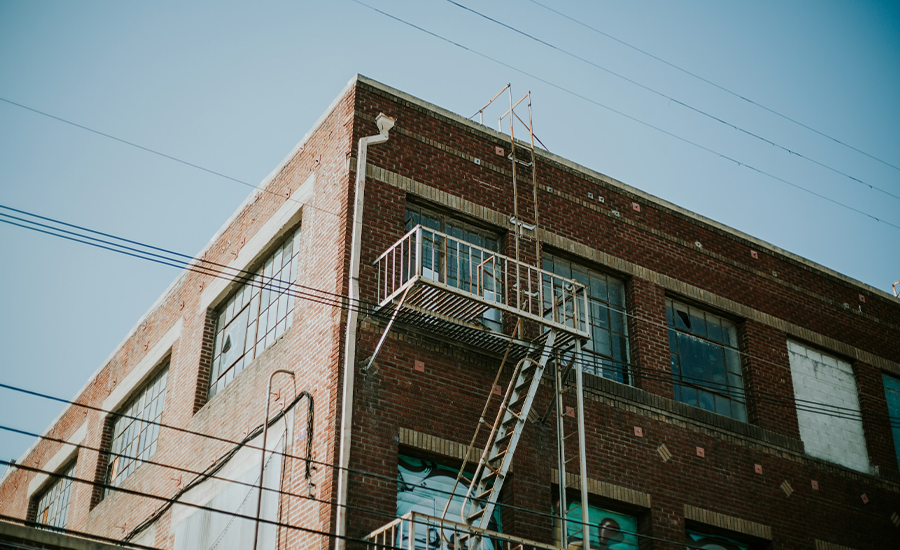When we talk about facade restoration, we’re diving into a world where urban landscapes get a new lease on life. It’s not just about fixing up a building’s exterior; it’s a crucial practice that combines art and science to breathe fresh vigor into our cityscapes. From historical preservation to modern upgrades, facade restoration plays an essential role in maintaining the structural health and aesthetic allure of buildings, ensuring they stand tall and proud in our urban fabric.
Understanding Facade Restoration
Dive into the world of facade restoration to discover its significance and intricacies – it’s not just about repair, it’s about reviving the soul of the building.
What is Facade Restoration?
So, you’re walking down the street, and you notice some old buildings getting a facelift. That’s facade restoration in action. It’s like giving buildings a makeover. But instead of just slapping on some paint, it’s about carefully fixing up the exterior – from cleaning to repairing and sometimes replacing parts of the outer walls. This isn’t just about making buildings look pretty; it’s like surgery for buildings, ensuring they’re healthy and stable.
Think about an old brick building. Over time, bricks can get loose, paint peels off, and it just looks tired. Façade restoration steps in to spruce it up, almost like turning back the clock to when the building was new. It’s a mix of art and science, using modern techniques and materials to restore the building’s glory without losing its soul.
Why is Facade Restoration Important?
Now, let’s talk about why we bother restoring facades. It’s not just for show.
- Structural Integrity: Imagine a building like a human body. Just as you’d go to a doctor for a check-up, buildings need care to stay strong. Without regular maintenance, small issues like cracks or loose bricks can turn into big problems. Facade restoration keeps buildings not just standing, but strong and resilient.
- Aesthetic Appeal: There’s also the beauty factor. Restored buildings are like gems of the neighborhood. They tell a story, add character, and, let’s be honest, they’re just nice to look at. It’s like when you clean up your room and suddenly it feels new – that’s what facade restoration does for buildings.
- Preserving History: For historical buildings, it’s even more special. It’s like keeping a piece of history alive. Every old building has a story, and by restoring it, we’re respecting and preserving that story for future generations. It’s not just about maintaining walls; it’s about keeping the past alive in the present.
In a nutshell, façade restoration is crucial. It’s about safety, beauty, and history. It’s a way of showing respect to our built heritage and ensuring these structures continue to grace our skylines and streets for years to come.
The Process of Facade Restoration
Uncover the meticulous steps in façade restoration, from initial assessment to repair, each phase ensuring the building’s history and integrity are preserved and enhanced.
Initial Assessment
Imagine you’re a doctor, but instead of people, you’re diagnosing buildings. That’s what happens in the initial assessment. Experts come in, and just like a doctor would check you up, they inspect the building’s facade inch by inch. They’re looking for signs of wear and tear, damage, or anything out of the ordinary. It’s detective work, really – finding clues on what’s wrong and deciding the best way to fix it. This step sets the stage for the entire restoration process, determining what needs to be done and how to do it efficiently.
Cleaning
Now, let’s get to cleaning. But this isn’t your typical spring cleaning. Depending on what the building’s made of, experts decide whether to use power washing – which is like giving the building a high-pressure shower – or gentler methods, like carefully hand cleaning delicate surfaces. Imagine trying to clean a painting; you wouldn’t just hose it down, right? It’s the same with buildings, especially the old or delicate ones. This step is all about getting rid of the grime, pollution, and anything else that’s accumulated over the years.
Repair and Replacement
After the building is all clean, it’s time to fix things up. This could mean patching up holes, redoing bits of masonry, or even repainting. It’s like mending an old, cherished garment – with care and attention to detail. For some parts that are too damaged, replacement might be the only option. This step is a blend of art and craftsmanship, carefully restoring or replacing elements so that the building looks its best while keeping its character intact.
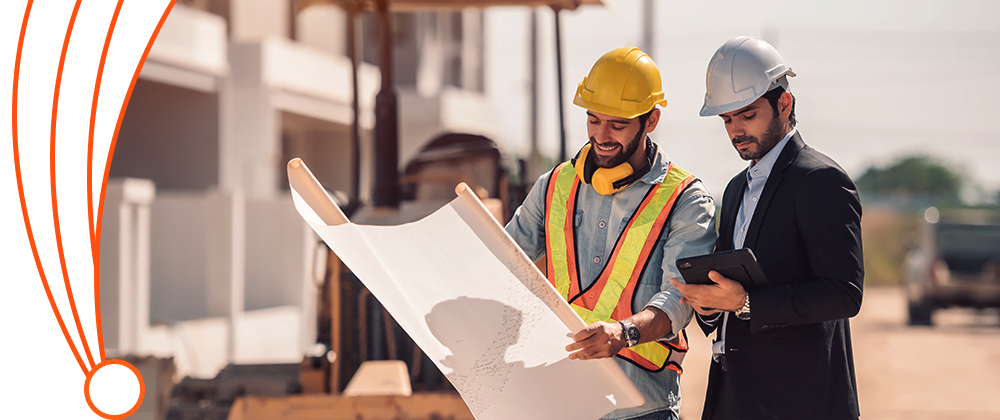
Comparative Table of Restoration Methods
Let’s break down the restoration methods a bit more:
| Restoration Method | Description | Best Used For |
| Power Washing | High-pressure water cleaning. | Removing surface dirt and grime. |
| Chemical Cleaning | Use of chemicals to clean the facade. | Tough stains and biological growth. |
| Repointing | Replacing the mortar between bricks. | Crumbling or damaged mortar joints. |
| Painting | Application of protective and aesthetic coatings. | Enhancing appearance, protecting surface. |
| Stone Repair | Repairing or replacing stone elements. | Chipped, cracked, or eroded stone surfaces. |
This table helps in understanding the various methods. Each one has its place, ensuring the restoration not only looks good but is also suitable for the building’s needs.
Challenges in Facade Restoration
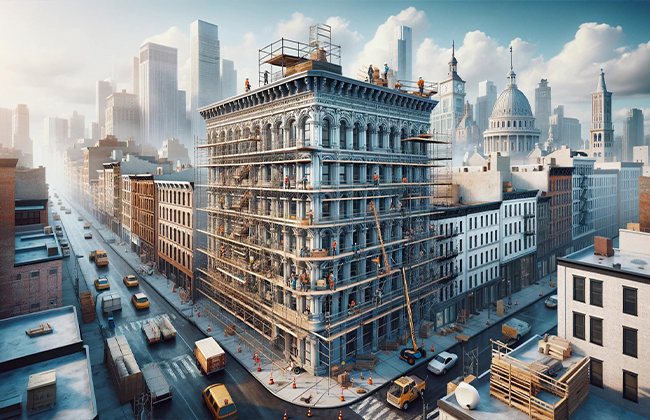
Restoring a building’s facade isn’t always a walk in the park. Just like any good challenge, it tests the skills and adaptability of those tackling it. Let’s talk about two major hurdles: dealing with historic buildings and wrestling with environmental factors.
Dealing with Historic Buildings
Imagine trying to update your grandma’s old, cherished recipe without losing its classic taste. That’s kind of what it’s like working on historic buildings. These structures aren’t just old walls and windows; they’re storytellers of the past. The challenge here is to maintain their character and historic value while bringing them up to date. This means using materials and techniques that are true to the building’s original era but also ensuring that the building is safe and functional in the modern world. It’s a balancing act between respect for the past and the demands of the present. Restorers need to be part detective, part historian, and part architect to get this right.
Environmental Factors
Now, let’s talk about Mother Nature. Buildings, especially the older ones, face a lot from the environment. Pollution, harsh weather, and even the sun can be tough on facades. It’s like leaving something outside for years; eventually, it’s going to show wear and tear. These factors can make restoration tricky because you’re not just fixing what’s already damaged; you’re also trying to protect the building from what’s going to come. It requires a deep understanding of materials and environmental impacts. Think of it as weatherproofing your house, but on a much larger and more complex scale. The goal is to make the building resilient enough to stand up to whatever the environment throws at it.
In short, facade restoration is an intricate dance with history and nature. It’s not just about making old buildings look new; it’s about honoring their stories and safeguarding them for the future.
Recent Advances in Facade Restoration
Explore the cutting-edge advancements in facade restoration, where technology like drones and advanced materials bring a new level of precision and sustainability to the process.
Technology and Facade Restoration
Let’s talk tech in facade restoration. It’s like the difference between old-school maps and GPS in navigation. Drones, for instance, are the new kids on the block. They fly around buildings, getting into nooks and crannies, giving us a bird’s eye view of places that are tough to reach. This means safer and more efficient inspections – no more scaffolding or risking lives just to check out a high corner.
Then there are advanced materials. Imagine using stuff in restoration that’s stronger, lasts longer, and even looks better than the old materials. These new materials can better withstand weather, pollution, and time. It’s like upgrading from an old flip phone to the latest smartphone in terms of performance and durability.
Facade Restoration: Best Practices
Learn about the essential best practices in façade restoration, emphasizing the use of high-quality materials and strict adherence to safety standards to ensure enduring and safe outcomes.
Use of Quality Materials
When it comes to materials in facade restoration, think gourmet ingredients in a five-star meal. Quality matters. Why? Because the better the materials, the longer the restoration lasts and the better it looks. It’s about choosing the right stuff for the job – materials that can stand up to the elements and time, keeping the building safe and sound for years to come.
Adherence to Safety Standards
Safety is like the golden rule here. It’s not just about the building; it’s about the people working on it and those using it. Adhering to safety standards ensures that the restoration work is not only effective but also secure. This means following regulations, using proper equipment, and always putting human safety first. Think of it as putting on a seatbelt in a car – it’s essential for everyone’s well-being.
In essence, facade restoration today is not just about fixing up old buildings. It’s about blending tradition with innovation, ensuring that our cherished structures not only survive but thrive in the modern world.
Conclusion:
In wrapping up our journey through the realm of facade restoration, it’s clear that this is more than mere construction work. It’s a pivotal craft that weaves together the past and the present, ensuring our buildings not only stand the test of time but also tell their stories with dignity. As our urban landscapes continue to evolve, the role of façade restoration remains crucial, bridging the gap between history and modernity, and preserving the character of our communities.
FAQs:
Q: What is Facade Restoration?
A: Façade restoration involves repairing, cleaning, and upgrading the external surface of buildings. It’s essential for maintaining structural integrity and historical value while enhancing aesthetic appeal.
Q: Why is Facade Restoration Crucial for Historic Buildings?
A: For historic buildings, facade restoration is vital in preserving architectural heritage. It keeps the original charm intact while ensuring the structure meets contemporary safety standards.
Q: How Does Facade Restoration Benefit a Building?
A: Besides improving a building’s look, facade restoration strengthens the structure, extends its lifespan, and can even improve energy efficiency by incorporating modern materials.
Q: Can Facade Restoration Impact the Value of a Property?
A: Absolutely! Restoring a facade can significantly increase a property’s value. It not only enhances the building’s curb appeal but also assures potential buyers of its well-maintained condition.
Q: What are the Latest Trends in Facade Restoration?
A: Recent trends include the use of advanced materials for longevity, drones for detailed inspections, and techniques that blend traditional aesthetics with modern functionality.





